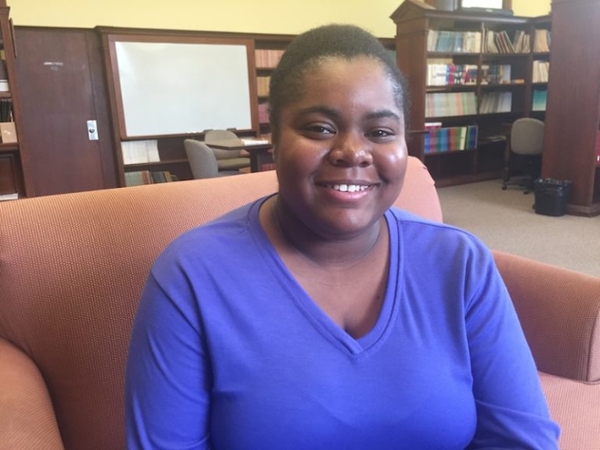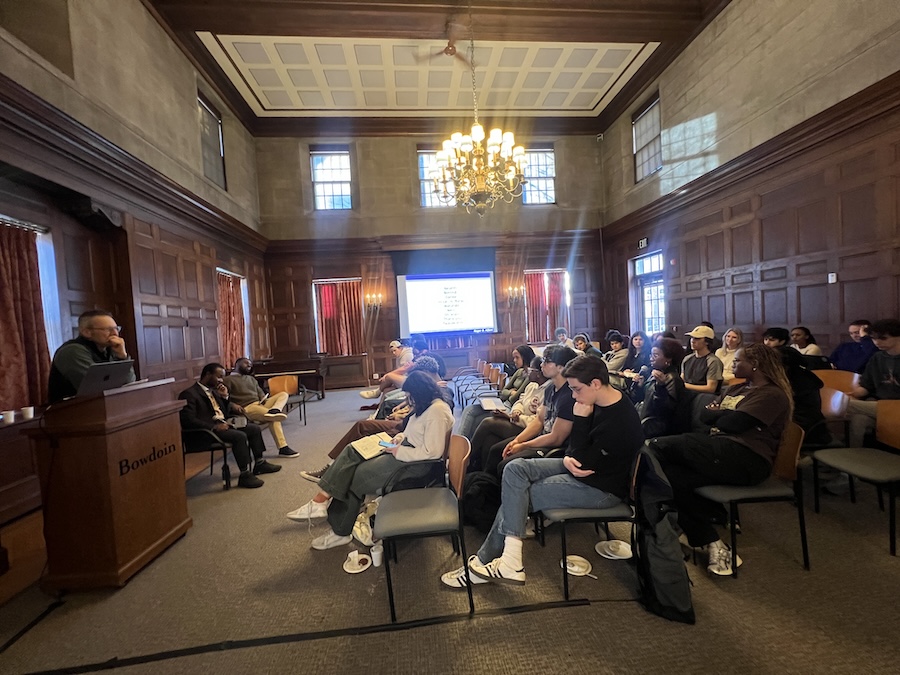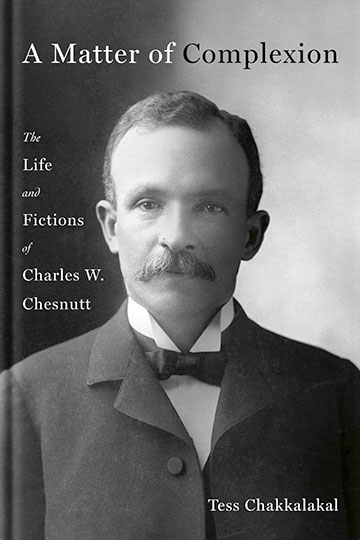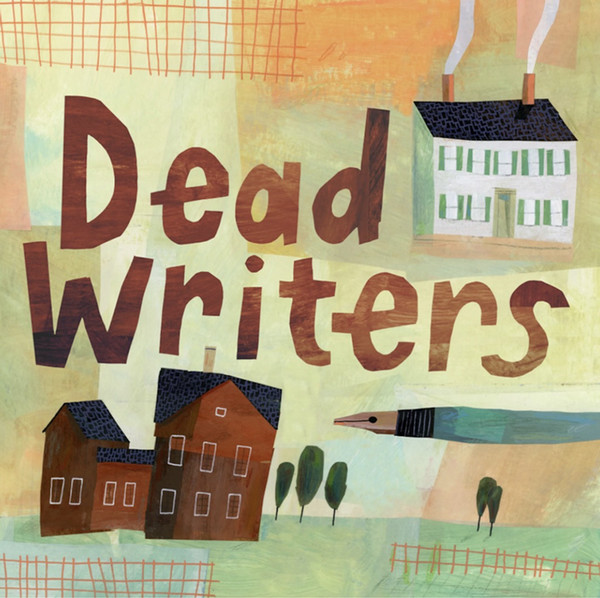Keeping Black Kids Safe: Preventing Violence in Chicago Schools
By Rebecca GoldfineFor students studying on Bowdoin’s peaceful campus, the problems of gun and gang violence in schools might seem distant and foreign.

LaShanda Harbin ’18 used her senior year, and the research skills she learned at Bowdoin, to shed new light on the problem of violence in the public schools of her hometown.
“I realized after being at Bowdoin that a lot of the experiences I’ve had are not discussed or represented or even recognized on campus,” she said. She is from Englewood, on the South Side of Chicago. “So I decided to write about it.”
Harbin has just defended her honors project, “Keeping Poor Black Children Safe: Gun-Violence and Gang-Violence Prevention Measures in Chicago’s Public Schools.” In her thesis, she looks at how the problem of school violence has evolved over the past fifty years, and she evaluates different violence-prevention measures adopted by Chicago schools.
She argues that certain policies enacted in the past, specifically school uniforms and school security guards, have become less effective over time. Instead, what appears to work better are placing counselors and social service workers in schools and implementing restorative justice programs. Restorative justice focuses on rehabilitating offenders by having them engage in reconciliatory dialogue with victims and community members.
When she was a student in the public schools, Harbin says, finding solutions to these problems wasn’t foremost in her mind. She admits she became inured to regular disruptions of the school day. “For many years, I went through the system thinking, ‘This is the way things are, this is the way things are meant to be’,” she said. Among the Chicago public schools she attended were Lindblom Math and Science Academy, a high school for gifted students.
For the first two years of high school, she was happy just to get lost in her love of physics and math. She thought about becoming an astrophysicist or a mathematician. But by her junior year, she began to pay more attention to her city’s social and educational problems, especially after the city begin to shut down and consolidate elementary schools in predominantly black and Latino neighborhoods. “It’s their fault!” she jokes about why she shifted her academic focus.
She also became troubled by seeing how violence interfered with young students’ education. In her senior year of high school, she was volunteering her afternoons to tutor elementary school children in math. But she recalls a time when her students told her they couldn’t come see her anymore because someone in their neighborhood had been shot and their mothers did not want them to leave the house.
Stories like this, she said, need to be more widely acknowledged. “I think children in a lot of contexts, regardless of race or class, but especially when you have poor children or children of color, they are ignored,” she said. “Their lives, what is happening to them, they are ignored.”
So being an astrophysicist, while fascinating, “would not help me address problems on the ground,” Harbin said. “If I were an astrophysicist, I would live among people who don’t know about these problems or don’t care to know and I wouldn’t be comfortable with that. I don’t think I could live with that.”
Why old policies stopped working
In her thesis, LaShanda Harbin finds that school uniforms kept Chicago public school students safe through the 1990s. But with changing gang structures and city housing policies, they stopped working as well. Originally, neutral-toned shirts and pants were adopted to flag students as non-gang members. But after city leaders began aggressively arresting gang leaders and tearing down housing projects where gangs were centralized, the groups began fracturing and becoming more localized. “Old gang networks didn’t matter as much,” Harbin said. “It’s not that you’re wearing the color red, it’s that you live on this or that block, so you must belong to that gang.” Additionally, it’s not that difficult for student gangs determined to brawl to get around school officers, Harbin noted.
But Harbin says she is not advocating that schools discontinue either schools uniforms or school security. Instead, she thinks these measures can be augmented with restorative justice programs, or by adding additional counselors and social workers. “In schools struggling with violence, counselors and social workers become an integral part of making sure students feel safe and avoid using violence themselves,” she said.
The key will be giving these alternative methods adequate attention and funding. “The point of all of this is to get kids to feel safe so they can learn,” she said.
Following graduation, Harbin will work as a two-year fellow for the Schuler Scholar Program, which provides support to high-achieving, low-income high school students in Chicago. Then she plans to pursue a graduate degree in urban education.
At Bowdoin, Harbin majored in education and Africana studies. She began her honors project last June, after getting an Irma Cheatham fellowship from Bowdoin to do research over the summer.
Harbin’s advisor, Brian Purnell—who is Bowdoin’s Geoffrey Canada Associate Professor of Africana Studies and History—praises Harbin for tackling a subject many of us would rather turn our eyes from. “LaShanda identified an important, understudied topic,” he said. “LaShanda’s research puts the ‘black lives’ that we don’t hear about often—the lives of children who are living and dying through the proliferation of guns and gangs—into the Black Lives Matter moment and movement.”
Harbin, Purnell continued, is a “superstar” at Bowdoin, a student who “possesses a rare combination of brilliance, integrity, an indomitable work ethic, and a high level of self-confidence, tinged with just the right amount of humility that helps her remain focused, and purposeful.”
Purnell added that he sees her undergraduate research as a starting point for more advanced research in the social sciences, psychology, school administration, history, and public policy, if she chooses. “I also hope LaShanda continues to do this work,” he said. “More than ever, Chicago, and the nation, needs her scholarship and leadership.”
Harbin, too, said she does not consider her work close to being done; more research and “on-the-ground work” is necessary to find clearer answers. “It’s easy to say schools should do this, or they should do that, but if you sit down and really look at everything, you realize things aren’t as simple as you make them out,” she said.
But Harbin is on track to finding those answers, and to making people pay attention. “The best part about teaching LaShanda, and learning with LaShanda, comes in the understated way she argues, analyzes, and debates,” Purnell said. “Her intelligence hits seminar and lecture participants like thunder and lightning: you may not hear or see it coming, but once it happens, you cannot ignore it.”



